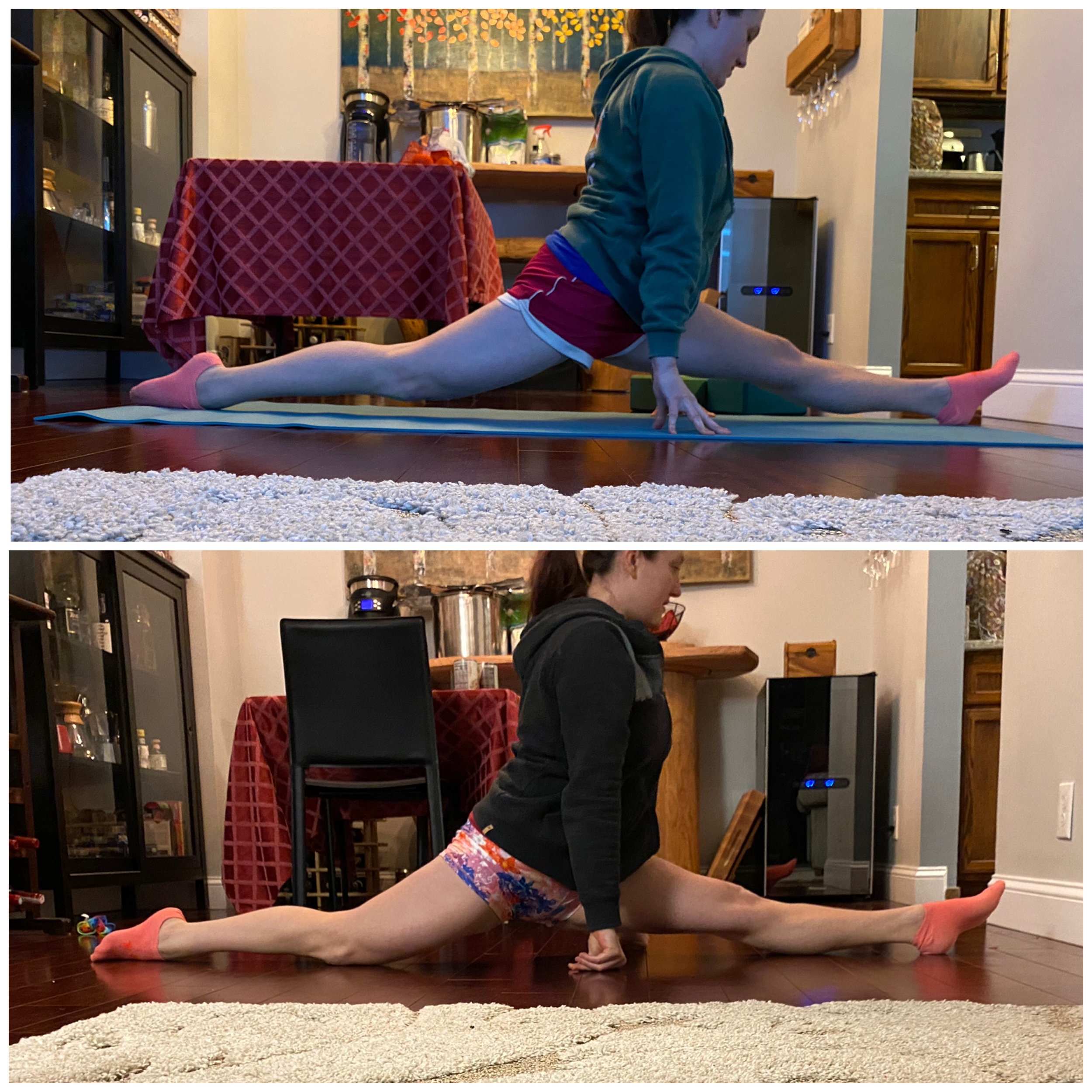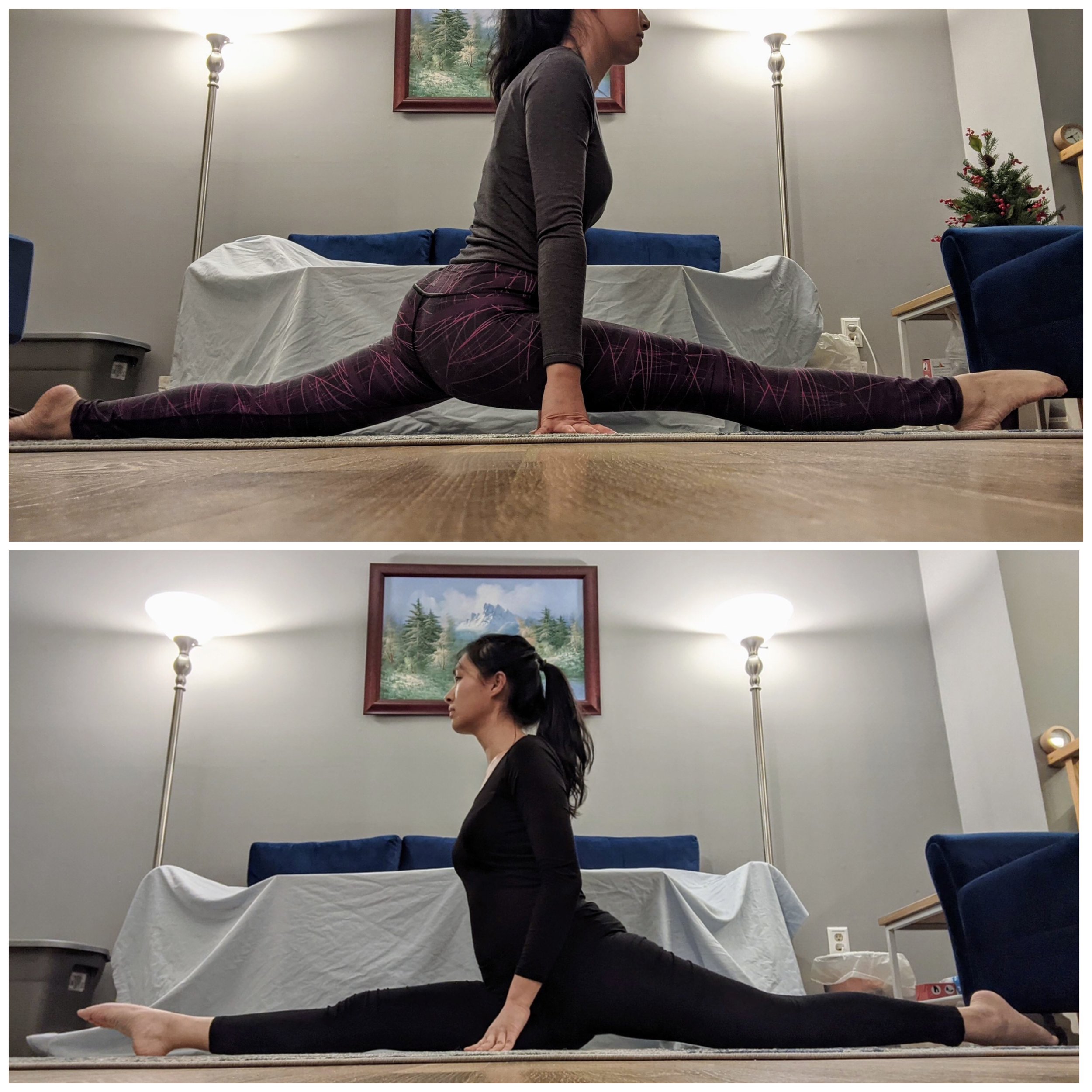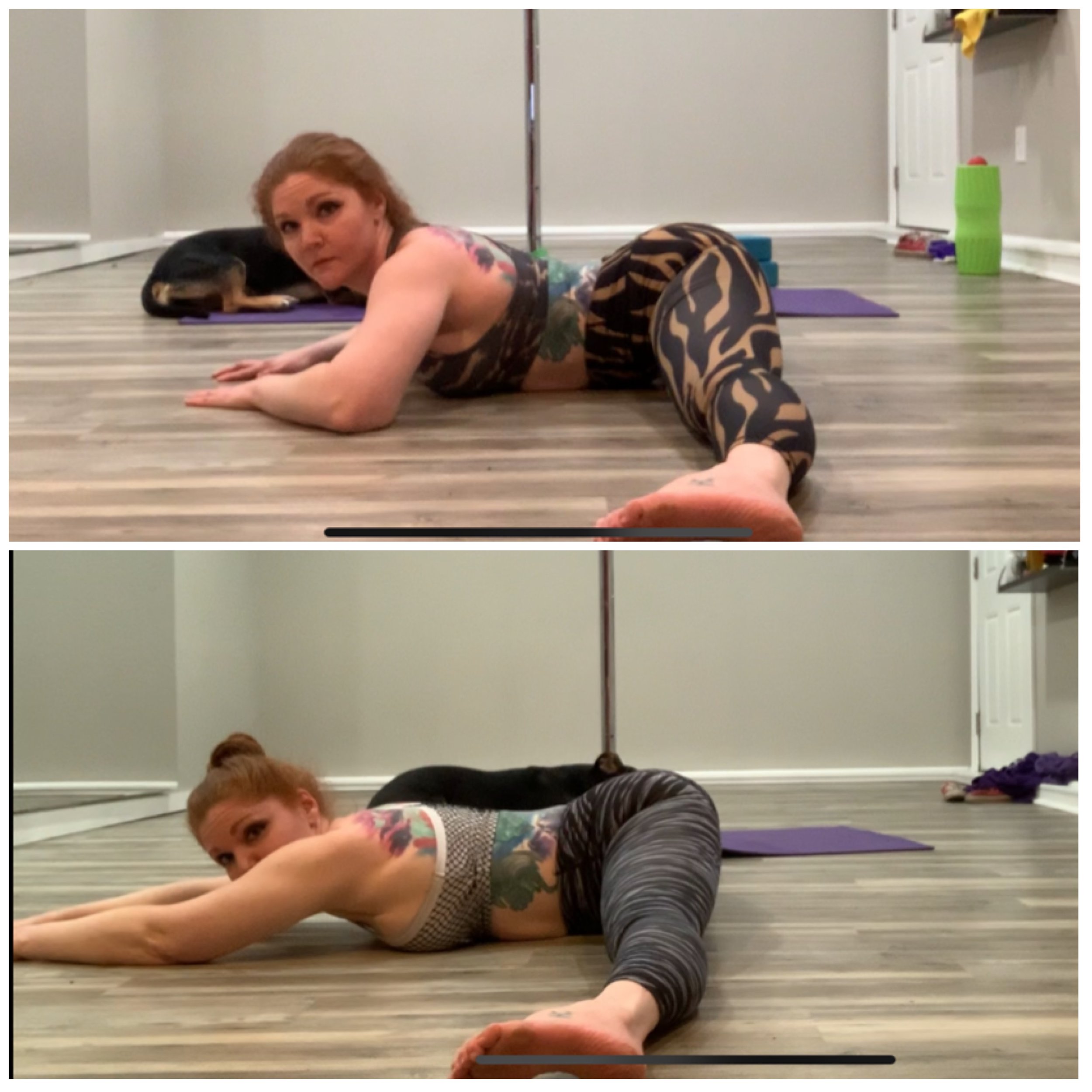Flexibility can be frustrating, but it’s not complicated.
Working with aerialists, polers, gymnasts & circus artists means that flexibility frustrations & concerns come up…A LOT. It’s not just about injury prevention, sometimes it’s aesthetics and skill acquisition that are limited by flexibility.
I’ll admit that I spent a large portion of my younger years, even when I was at my training peak, missing the flexibility I needed to succeed in my gymnastic/aerial goals. I was told for years that I was “just stronger than I was flexible.” My competitive gymnastic coaches were quick to blame my muscular physique and strength for my inflexibility. I wasn’t bendy, and they kept directing me toward more and more passive stretching. Hours of time spent “hanging out” in splits. Practices where they forced me into a split, held me there or weighed me down. Not only did I NOT get more flexible, I began to injure myself trying. My joints ached, my hamstrings felt strained and I was losing endurance with my tumbling and other power skills.
In college I just shifted away from anything remotely flexibility-based. I shifted into circus and exhibitional gymnastics and leaned into my strength, avoiding splits, bridges and anything remotely “bendy.” I performed well and no one else seemed to notice that I wasn’t flexible. By age 22 I’d basically written-off flexibility as a personal goal and I went off to PT school after undergrad with no aspirations to improve it, or even maintain what little I had.
But, life has a way of making us cycle back to address our weakness and won’t allow us progress without first dealing with “wounds of the past.” The more I studied, the more I treated and the more I talked to patients, athletes and instructors, the more it was clear that flexibility was a big deal. It was the basis for good biomechanics and an indication of good stability and understanding of motion.
Fast forward 13 years (and a lot of experience later) and my understanding of flexibility is now completely different. It no longer frustrates me, eludes me or confounds me. I’m able to improve it, use it and increase it without pain or loss of power. And I finally have my full splits (and over-splits) without any negative side effects.
Dec 2018:
My first comfortable & pain-free over-split. No forcing or prolonged stretching required.
So, what had I learned?
A lot - a lot more than you need to know to get more flexible. But here are the basics:
Flexibility can come from instability (aka hypermobility) but it is dangerous, short-lived and often based on genetic variability in connective tissue. If you have an “always been bendy” friend who just falls into splits without control, you know an example of this. Chances are that person has had issues & lost flexibility as they’ve aged/progressed through their sport. So, short summary: hypermobility = bad.
Joint active range of motion (AROM) and a muscle’s ability to lengthen are neurologically controlled. Muscles don’t actually “get longer” over time with stretching and joint capsules don’t (or at least they shouldn’t) become stretched & deformed. Rather, what happens is that your neurological system adapts to perceived stretch with learned tolerance. Basically the stretch becomes “non-threatening” when done right and when actively supported. Over time your brain allows the muscles to contract while lengthening farther (think less fiber overlap) and you see more range of motion. If done right, your joints don’t actually “deform,” they just move through their actual physiological end range - something that they couldn’t do before because the muscles were restricting them as a protective mechanism.
True strength doesn’t prevent flexibility. Rather poor strength of the tiny joint stabilizers causes the prime movers (aka the big muscles that move you) to attempt to stabilize the joints. This actually means less flexibility over time because the prime movers aren’t designed to do both stability and mobility at the same time. That’s too many degrees of freedom. So they just “lock down” rather than allow nuanced, dexterous movement. This means that if you’re training “wrong” or compensating for poor stability and poor engagement of those tiny stability muscles, you will see a stark loss of flexibility as you “get stronger” as the big guys are compensating and overworked.
You can control how your body reacts to a stretch by focusing on the sensation you feel and calmly relaxing into it. Basically, you need to stretch to your comfort - not to pain. If a stretch is “too much” for your system, you’re training your brain to “lock down” and tighten against the stretch. This is reflexive & outside your control. Even if you perceive that you’re “ok with pain” your stretch receptors in the muscle are not. They will reflexively trigger a guarding response and prevent release into a lengthened position. So stretching “too hard” is actually working against your goal. Instead, think of the old “less is more” and trust your body to make gains in a comfortable way.
Interested in the specifics?
Check out my flexibility programs!
“Front Splits: 4-week Active Flexibility Intensive.”
(Straddle Split Intensive Coming Soon)
These programs break down simple, easy-to-do active exercises to improve your splits in a 4-6 weeks timeline. It was built off recent research in flexibility, designed to be short (15 min or so/day), and I was the first “guinea pig” (see above Dec 2018 success photo). Since then, my clients that have used the exercises have seen improvements too. I’ve included their “before and after” 4-week photos below. (Stretching 3x/week, for 15 min each session).







